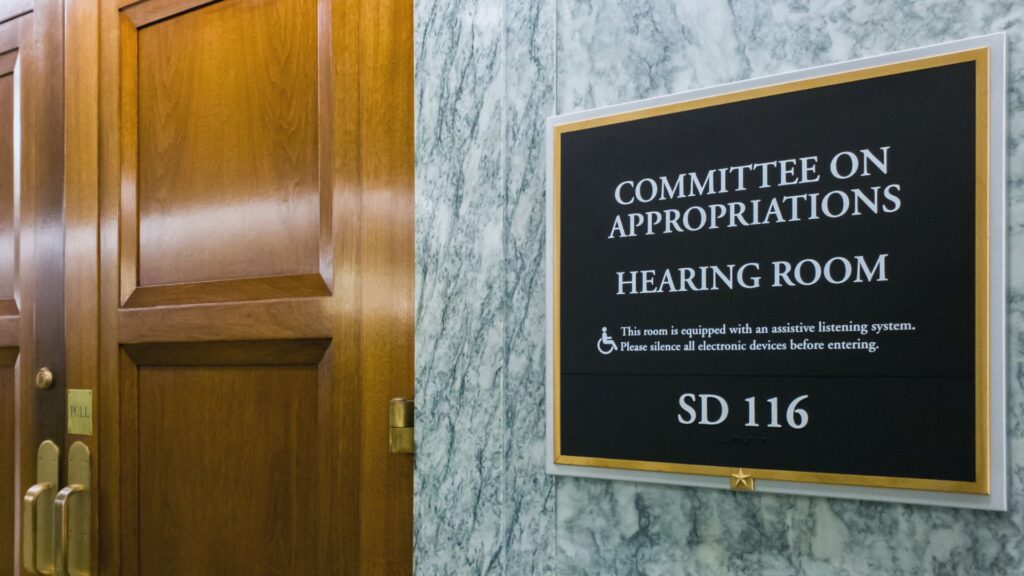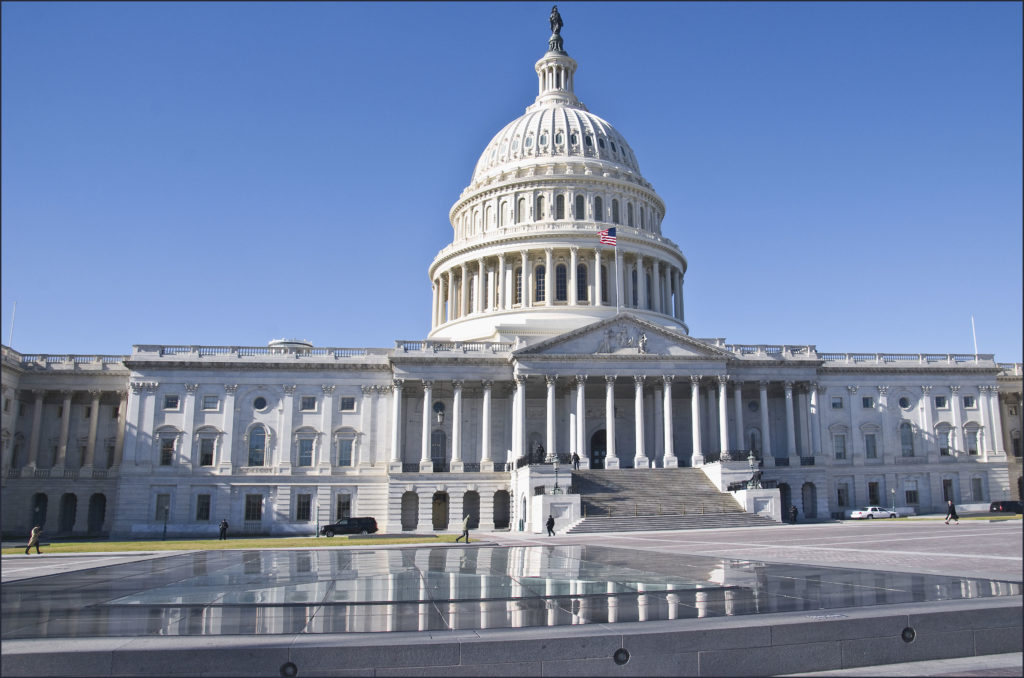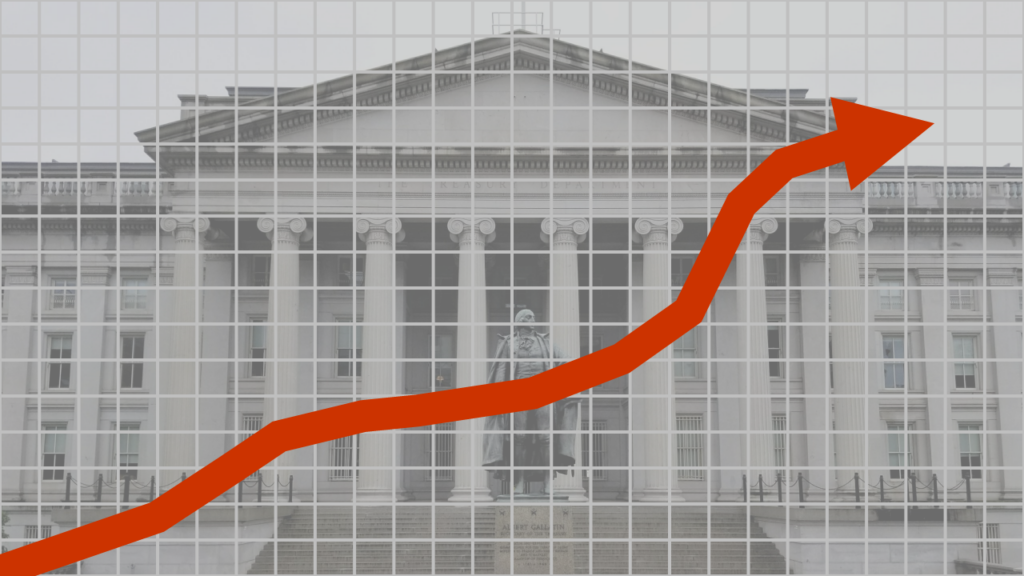- News
FY2026 Appropriations
We are tracking the status of FY2026 appropriations, where things stand, and what it all means for bond lawyers.

Last Updated November 18, 2025
The Federal Government’s Fiscal Year 2025 (see FY2025 tracker) began on October 1, 2024. Congress passed multiple continuing resolutions (CR) to sustain the federal government’s outlays largely at FY2024 levels. These actions included the passage of a final CR on Friday, March 14, that funded the government at FY2024 levels through the end of FY2025. As of the “Last Updated” date for this article, the federal government is partially appropriated but mostly funded through a CR that expires on January 30, 2026.
Federal Government Reopens
On the evening of Wednesday, November 13, President Trump signed H.R. 5371 into law, ending the longest federal government shutdown in U.S. history. While portions of the government are fully appropriated through the end of FY2026 (September 30, 2026), the vast majority of federal operations are now appropriated via a CR that ends on January 30, 2026.
Note on PAYGO Sequestration
Section 8001 of the November continuing appropriations act (H.R. 5371) instructs that, for the purposes of the annual report issued pursuant to section 5 of the Statutory Pay-As-You-Go (PAYGO) Act of 2010 (2 U.S.C. 934), the balances on the PAYGO scorecards established pursuant to paragraphs (4) and (5) of section 4(d) of PAYGO shall be zero. The provision eliminates the risk of additional sequestration to mandatory spending, such as payments for tax credit and direct pay bonds, due to PAYGO for the remainder of calendar years 2025 and 2026.

New to Appropriations?
Check out our primer on the federal appropriations process.
Updates
You can track the status of both chambers’ work to complete all 12 appropriations bills here. NABL will continue to keep members informed as more becomes available. [New Updates Highlighted]
- 11/13/2025: Federal government reopens and resumes operations.
- 11/12/2025: The House of Representatives passes the final package in a 222 to 209 vote and President Trump signs it into law.
- 11/10/2025: The Senate passes the package in a 60 to 40 vote. It moves onto the House of Representatives, which is called back into session.
- 11/9/2025: The Senate successfully invokes cloture in a a 60 to 40 vote avoiding the threat of a filibuster and teeing up the final package for a likely passage.
- 11/9/2025: Republican leadership offers and Democratic leadership accepts a modified proposal that includes:
Details of November Package
- Full year appropriations for three areas of the government: agriculture and FDA; veterans affairs and military construction; and the legislative branch.
- A CR to maintain federal appropriations for the remainder of the federal government through January 30.
- A promised vote in December on extending the ACA tax credit subsidies.
- Rehiring of federal employees terminated during the shutdown and back pay for all federal employees.
- 11/7/2025: Democratic leadership announce a new proposal that would reopen the government into the new year and provide a one-year extension for the enhanced Affordable Care Act (ACA) tax credit subsidies. Republican leadership rejects the proposal.
Week-End Update: October 31, 2025
The shutdown has spanned the entirety of October without an immediate solution in sight. Democrats maintain that any deal on federal appropriations must also address several healthcare priorities, including the extension of expiring tax credits for select Affordable Care Act (ACA) marketplace plans. Senate Republican leadership reiterate that they will negotiate on various other measures only after the government reopens, and Speaker Mike Johnson (R-LA) has kept the House out of session since September.
Note on SLGS
NABL has received multiple inquiries into the status of new sales of State and Local Government Series (SLGS) securities. The Treasury Department historically suspends such sales during the approach to a federal debt ceiling, which is a different financial situation than a lapse in appropriations. Federal money for new SLGS is a form of mandatory expenditure and therefore should not be impacted by the appropriations process. Interested municipal market participants may wish to consult the Bureau of Fiscal Services (BFS) contingency plan for more details on how personnel furloughs may impact staff service.
- 10/8/2025: Unlike most other federal agencies, the IRS continued operating for several days beyond the start of the government shutdown on October 1, 2025 due to advanced appropriations from the Inflation Reduction Act (IRA) of 2022. On October 8, however, the IRS announced it furloughed nearly half of its workforce until the ongoing lapse in federal appropriations is resolved. Bond and tax counsel should consult the IRS’s contingency plan for more details on how operations are affected.
- 10/6/2025: The Senate rejected two competing proposals to address the political impasse and reopen the government. Senate Republicans again offered a “clean” CR that would fund the government through November 21, 2025, but it did not include the various healthcare provisions sought by Democrats. Three Senate Democrats voted again for the package, but Republican leadership had hoped to pick up several additional Democrats in their third round of voting. Republicans rejected the Democrat proposal to address various healthcare proposals and fund the government through October 31, 2025.
- 10/1/2025: Federal appropriations lapsed at 12:00am ET at which point the federal government began a near complete shutdown.
Note on the Shutdown
After weeks of political impasse, federal appropriations lapsed at 12:00 AM (EDT) on October 1, 2025 without a clear path forward on FY2026 appropriations. As a result, the federal government has begun implementing a widespread shutdown. Select federal government functions will continue to operate as normal for the time being due to advance appropriations or as a result of funding streams other than the annual appropriations process. Other federal services continue due to their essential nature.
Most government shutdowns resolve quickly and pose little risk to most municipal-bond-financed projects. The duration and extent of the shutdown, as well as the facts and circumstances of specific projects, issuers, and borrowers will help determine what, if any, impacts a government shutdown may pose.
Municipal market participants may turn to counsel to discuss potential implications of a shutdown to their individual situations. Bond lawyers may wish to consult federal agency contingency plans for more information on how specific federal programs, operations, and sources of revenue related to municipal bond-financed projects will be impacted by the ongoing federal government shutdown. NABL offers high-level considerations for municipal market participants in the event of a lapse in federal appropriations on our issue brief on the “Federal Appropriations Process.”
Latest Agency Contingency Plans
Below are the latest available contingency plans for relevant federal agencies as of October 1, 2025. These plans, as well as the status of federal operations, are subject to change during a federal government shutdown.
- Department of the Treasury Offices
- Internal Revenue Service (IRS) (September 29, 2025)
- Securities and Exchange Commission (SEC) (August 7, 2025)
- Department of Transportation (March 12, 2025)
- Department of Housing and Urban Development (HUD) (September 29, 2025)
- Environmental Protection Agency (EPA) (September 29, 2025)
- Department of Agriculture (USDA) (September 30, 2025)
- 9/24/2025: Amid an increasing likelihood of a government shutdown, the Director of the White House Office of Management and Budget (OMB), Russell Vought, issued a memo that directed agency leadership to update contingency plans for the event of a lapse of appropriations. The guidance included a directive for agencies to consider and pursue additional reduction in force (RIF) measures to decrease staffing.
- 9/23/2025: President Trump canceled a meeting scheduled for Thursday, September 25, with House Minority Leader Hakeem Jeffries (D-NY) and Senate Minority Leader Chuck Schumer (D-NY). The meeting was initially scheduled at the request of the congressional Democratic leaders to negotiate a path forward on the appropriations impasse.
- 9/19/2025: The Senate failed to pass the House’s CR in a 44 to 48 vote with one Republican joining Democrats in voting against the measure, and one Democrat joining Republicans in supporting it.
- 9/19/2025: The House of Representatives passed the clean CR (H.R. 5371) in a vote almost entirely along party lines with one Democrat joining the Republicans in voting for its passage.
- 9/17/2025: House Republican leadership tentatively plan to hold a vote on their short-term spending deal as early as Friday, September 19, 2025.
- 9/16/2025: House Republican leadership released a proposed CR to fund the government through November 21, 2025. The measure would also include increased funding for lawmaker security. Democrats have broadly rejected the plan, primarily due to the package’s failure to address expiring healthcare tax credits. While Republicans can pass a short-term spending package along party lines in the House, they will need at least seven Democrats to join them in a Senate vote.
- 7/17/2025: The House Appropriations Subcommittee on Energy and Water marks up and advances an appropriations package that would propose significant cuts to various water related federal financing programs including the drinking water state revolving fund (SRF). While significant, the reductions would be lower than those proposed in the President’s budget request. It would, however, maintain funding for the Water Infrastructure Finance and Innovation Act (WIFIA) loan program.
- 5/2/2025: The White House Office of Management and Budget sends its discretionary budget requests to Congress. The budget proposal is nonbinding and appropriations for the federal government are determined by Congress. The proposal, however, does indicate the Administration’s appropriations priorities and perceived funding needs for agencies and federal programs. View Request >
More on Appropriations

FY2025 Appropriations
We are tracking the status of FY2025 appropriations, where things stand, and what it all means for bond lawyers.

FY2024 Appropriations
Review of the FY2024 federal appropriations process.

Biden Releases FY2025 Budget
The FY2025 appropriations season has begun. Here’s a quick summary of what’s inside and what we’re tracking.
Other Resources

Understanding the Debt Ceiling
What are the debt ceiling and federal downgrades, and what do they mean for municipal bonds.
Save the Date: Essentials 2026
We are traveling to Austin, Texas next year to host The Essentials, our foundational conference for new public finance attorneys. Save the date for Wednesday, April 8 to Friday, April 10, 2026.
